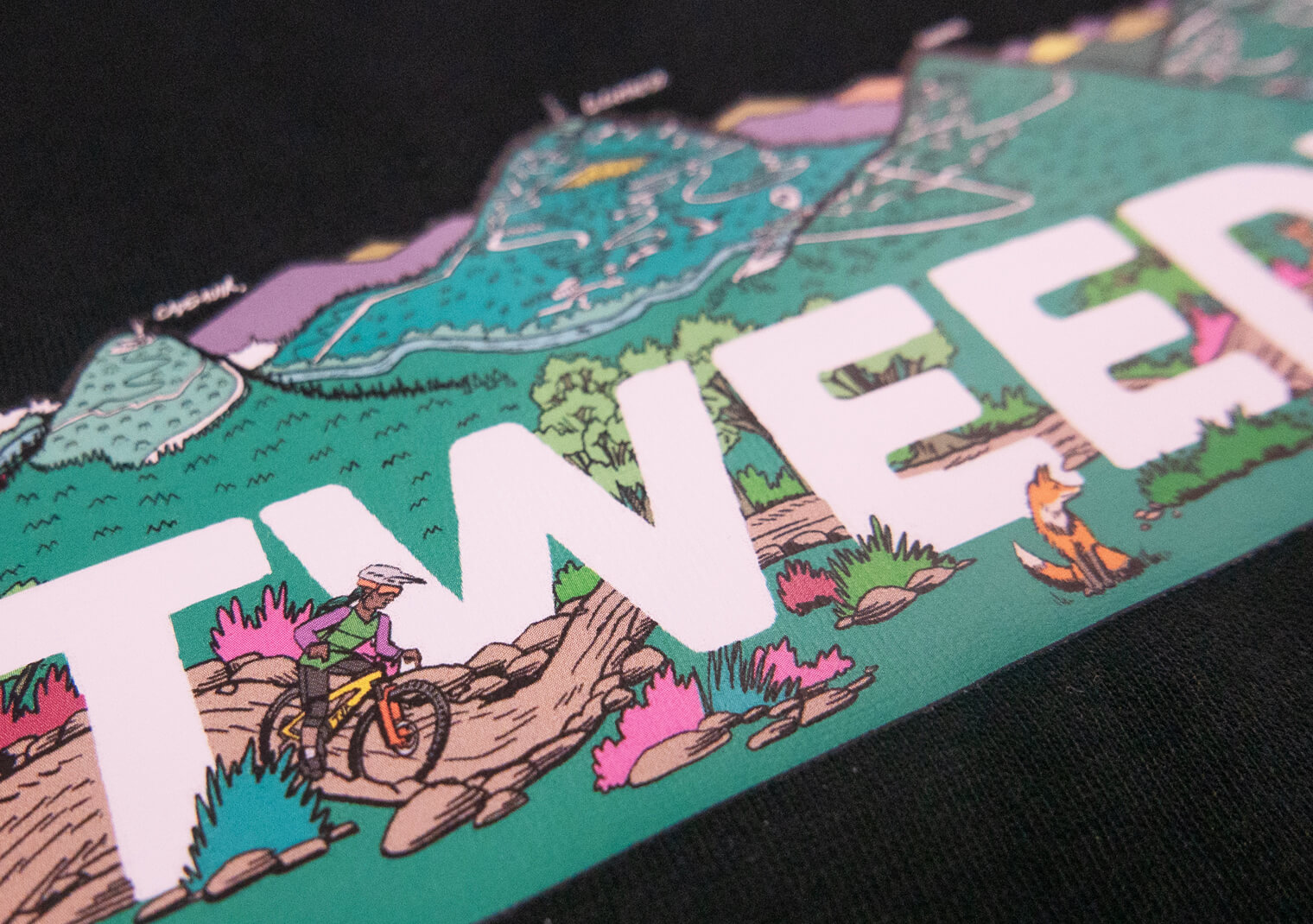In this article, we explain the differences between DTG and DTF printing. We'll cover what each method is, their best uses, look and feel and the pros and cons, helping you make an informed decision on which printing method is best for your needs.
WHAT IS DTG PRINTING?
DTG is a printing technique that uses inkjet technology to print designs directly onto clothing & other fabric, much like an industrial inkjet printer for clothes. This method is ideal for printing complex, high-resolution images directly onto garments, especially on high-quality cotton fabrics.

WHAT IS DTF PRINTING?
DTF printing involves printing a design onto a special film, which is then transferred onto the garment using heat. This technique is versatile and works well on a wide range of fabrics, including those that may not be suitable for DTG printing. The result is a durable, vibrant print with a slightly heavier feel.

BEST USES FOR DTG (DIRECT TO GARMENT) PRINTING
Best for Small Orders: Perfect for smaller batches where high detail is needed, such as complex or photographic images.
Ideal For High Quality Cotton Fabric: Works best on 100% cotton or high-cotton blend fabrics, providing a soft, natural feel to the print. However, lower-quality fabrics may produce subpar results with DTG.
BEST USES FOR DTF (DIRECT TO FILM) PRINTING
Best for Small Runs and Solid Colour Designs: Great for printing bold, solid-colour graphics and logos. Ideal for designs that have well-defined edges and do not require the print to fade seamlessly into the garment.
Works Well on Various Fabrics: Especially fabrics that are challenging for DTG, such as polyester or other synthetic blends. It can also be used on certain 100% cotton garments & garment colours that don't print well with DTG.
LOOK & FEEL OF DTG
Appearance: Produces prints with a matte to satin finish, a light feel that is soft to the touch, particularly on lighter-weight fabrics.
Feel: Soft and breathable, the print integrates well with the fabric for a softer look and feel.
LOOK & FEEL OF DTF
Appearance: DTF prints have a satin finish, providing a slight sheen. The print sits on top of the fabric, resulting in a bold & vibrant print.
Feel: Smooth to the touch but can feel slightly thicker or heavier than DTG prints, particularly on larger print areas.
PROS OF DTG
Cost-Effective for Small Runs: Economical for low-quantity orders with complex, multi-colour designs.
High Detail: Capable of producing intricate, high-resolution prints with gradients and photographic quality.
Softer Finish: The prints are softer and lighter, providing a comfortable, breathable print.
CONS OF DTG
Limited Garment Options: Best suited for high-quality, 100% cotton fabrics, but garment colour choice has limitations.
Special Care Required: DTG printed garments need more care when washing, you have to follow washing instructions properly to prevent early cracking or fading.
PROS OF DTF
Wide Range of Garments: Compatible with a variety of fabrics, including synthetic materials like polyester & a broader range of garment colours that aren't suitable for DTG, making it a more versatile option.
Very Durable: The heat transfer process creates durable prints that withstand repeated washing and tumble drying without fading or cracking.
Brighter & Bolder Colours: Our DTF transfers are printed using CMYK plus Red and Green inks, providing a wider colour range and more vibrant prints compared to DTG, which uses only CMYK. Additionally, fabric type has less impact on print quality with DTF, resulting in consistent, high-quality prints across various garment colours and types.
CONS OF DTF
Heavier Print Feel: DTF prints can feel thicker or bulkier compared to DTG, especially on larger print areas. This might be considered a disadvantage for some, but it can also be a positive depending on personal preference.
Design Limitations: Best suited for designs with well-defined edges. It is perfect for logos and graphics with clear boundaries but not ideal for designs with gradients or soft edges that blend into the fabric.
Adhesive Edge: DTF prints have a thin (approx. 0.5mm) transparent glue outline around the design, which is only noticeable upon very close inspection.
SUMMARY: WHICH SHOULD YOU CHOOSE?
Choose DTG: If you want a softer, lighter feeling print, DTG is ideal for high quality, 100% cotton fabrics and for designs that have soft edges that blend into the fabric.
Choose DTF: For the more durable and versatile print option, especially if you want to offer a wide range of products, without the limitations of DTG. It’s perfect for solid colour graphics, logos, and garments requiring frequent washing.



